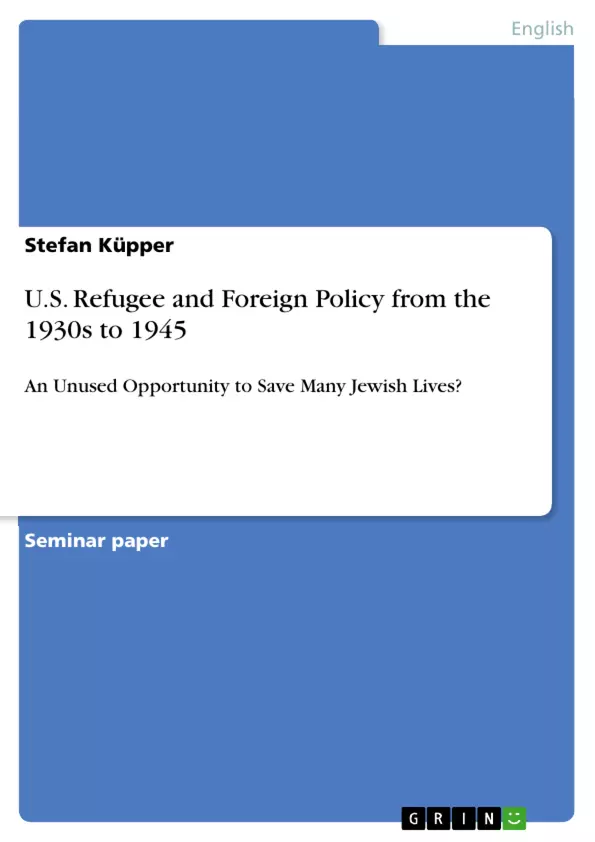Three quarters of the U.S. population believed at the end of the war that several hundred thousands of Jews had been exterminated in German concentration camps. As a matter of fact, nearly six million Jews perished in those camps. But why did hardly anyone care, or rather know, about the Jews’ fate in Europe? Many U.S. American people faced severe problems in their own country – the aftermath of the Great Depression was still noticeable. Even between 1938 and 1939 an estimated number of eight to ten million people were unemployed in the USA. Consequently, a latent anti-Semitism existed in the U.S. society and was stirred up by people like W. D. Pelley as well as by Father C. E. Coughlin.
But Pelley and Coughlin were not the only ones in opposition to the immigration of Jews; especially the State Department (responsible for immigration quotas) blocked foreign immigration due to bureaucratic inefficiency; the U.S. immigration quotas permanently decreased from 1939 to 1945 and in a way locked up Jews in Europe. Even the different groups of American Jews (e.g. Zionists versus Non-Zionists) were not able to establish a concentrated conglomerate in order to support European Jews.
Inhaltsverzeichnis (Table of Contents)
- Introduction
- The 1930s up to 1939
- The War Years 1939 - 1945
- Conclusion
Zielsetzung und Themenschwerpunkte (Objectives and Key Themes)
This work examines the U.S. refugee and foreign policy towards Jewish refugees during the period between the 1930s and 1945. It investigates why, despite knowledge of the growing persecution of Jews in Europe, the United States did not do more to save Jewish lives.
- The impact of anti-Semitism in American society on refugee policy
- The role of the State Department in hindering Jewish immigration
- The influence of economic concerns and the Great Depression
- The limitations of Roosevelt's ability to act in the face of political opposition
- The complexities of Jewish internal politics and the inability to form a unified front for rescue efforts
Zusammenfassung der Kapitel (Chapter Summaries)
- Introduction: The chapter introduces the topic by highlighting the widespread ignorance and indifference towards the plight of European Jews during the war. It explores the socio-economic context of the United States at the time, emphasizing the lingering effects of the Great Depression and the presence of latent anti-Semitism.
- The 1930s up to 1939: This chapter delves into the rise of anti-Semitic sentiment and organizations in the United States, including the activities of figures like Father Coughlin and W.D. Pelley. It discusses the impact of these groups on public opinion and the challenges faced by Roosevelt in navigating the political landscape. The chapter also examines the role of the State Department in limiting immigration through bureaucratic inefficiency and restrictive quotas.
Schlüsselwörter (Keywords)
Key themes explored in this work include U.S. refugee policy, anti-Semitism, the Great Depression, the role of the State Department, immigration quotas, Jewish internal politics, and the limitations of Roosevelt's power.
- Quote paper
- Stefan Küpper (Author), 2007, U.S. Refugee and Foreign Policy from the 1930s to 1945, Munich, GRIN Verlag, https://www.hausarbeiten.de/document/144009


